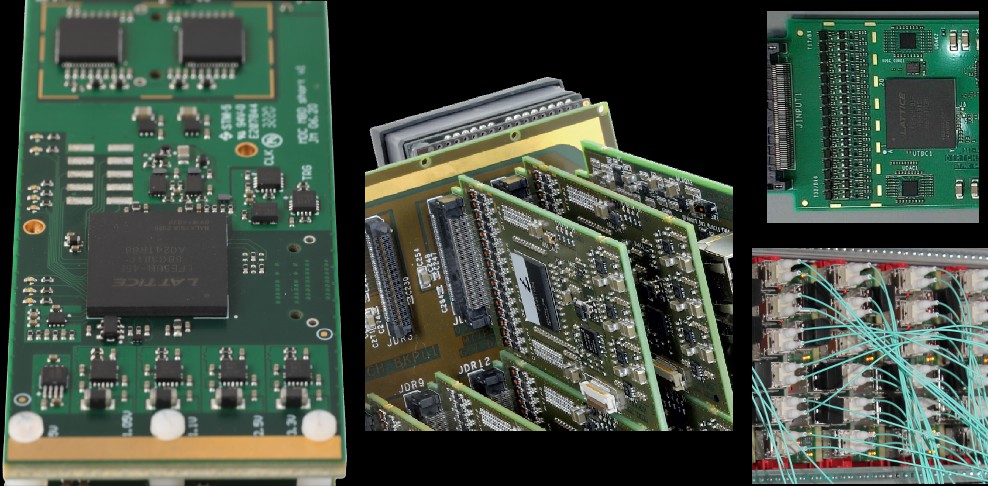
The HADES data acquisition system (DAQ) has been continuously upgraded and improved since its initial implementation more than 20 years ago. The current DAQ system is based on custom electronic boards equipped with Field Programmable Gate Arrays (FPGA) and utilizes optical data transmission.
A dedicated optical network within the detector and a commercial 10-Gigabit Ethernet infrastructure transports data to the server farm. The optical network features high bandwidth, low-latency, bi-directional data transport. All data are transmitted on dedicated virtual channels: trigger information, event data and slow-control information.
The 80,000 detector channels of HADES are read out by about 2,000 front-end boards comprising 4,000 FPGA. As the HADES DAQ employs a traditional, synchronously triggered read-out scheme, minimizing communication latency is a critical design aspect. Currently, the detector can record events at a rate exceeding 100 kHz reaching data rates approaching 1 GByte/s.
A comprehensive description of the basics of the current DAQ system can be
found in The Upgraded HADES Trigger and Data Acquisition System" (JINST 6 C12056 2011)
The most recent upgrade of the DAQ system involved exchanging the drift chamber read-out electronics with modern analog signal processing units and updated digital hardware DOI 10.1088/1748-0221/19/02/C02056
This drastically increased the read-out speed and reduced communication latency. All electronics also contain various features such as monitoring detector performance or collecting fine-grained trigger information which the central control unit can use to decide if data should be recorded or discarded.
During the February 2022 experimental run the system successfully collected more than 700 TB of data containing over 41 billion events.
